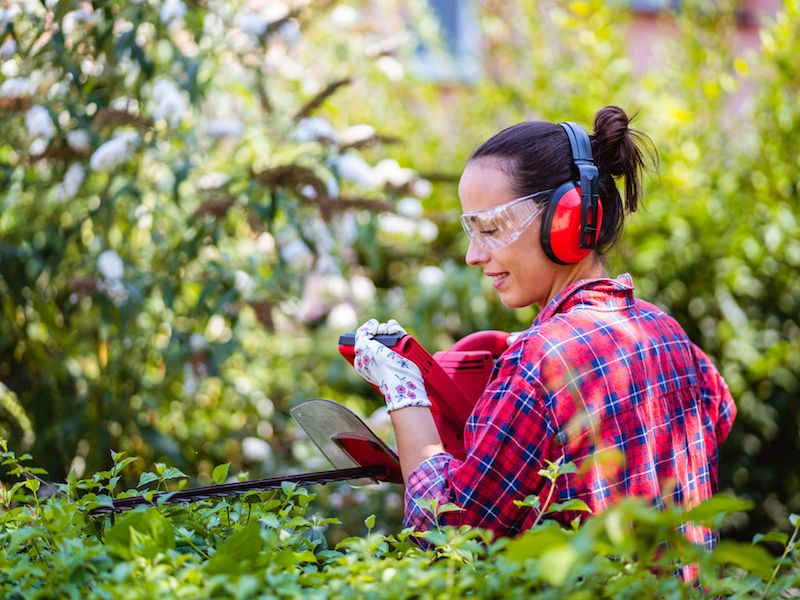
Eating right and protecting your hearing have some similarities. It’s hard to know where to begin even though it sounds like a good idea. If there aren’t any obvious noise dangers and you don’t think your environment is particularly noisy, this is especially true. But your ears and senses can be stressed by daily living, so doing these hearing protection techniques can help preserve your auditory acuity.
If you want to keep enjoying the sounds around you, you should do everything you can to slow down the degeneration of your hearing.
Tip 1: Hearing Protection You Can Wear
The most simple and practical way that you can safeguard your hearing is to protect your ears. This means taking basic steps to diminish the amount of loud and damaging noises you’re exposed to.
For many people, this will mean wearing hearing protection when it’s warranted. Hearing protection commonly comes in two basic forms:
- Ear Plugs, which are placed in the ear canal.
- Ear Muffs, which are put over the ears.
Neither form of hearing protection is inherently better than the other. Each style has its positive aspects. Your choice of hearing protection should, most importantly, feel comfortable.
Tip 2: When Sound Gets Dangerous, be Aware of It
But how can you tell when to use hearing protection? We’re used to connecting dangerous noise with painful noise. But much lower levels of sound can harm your ears than you might think. The sounds of traffic, for instance, are loud enough to begin injuring your hearing after just a couple of hours. Knowing when sound becomes harmful, then, is a vital step in safeguarding your hearing.
The following threshold is when sound becomes dangerous:
- 85 decibels (dB): This volume of sound is harmful after about two hours of exposure. Your hairdryer or a busy city street are both scenarios where you will find this volume of sound.
- Over 100 dB: Your ears can be very rapidly injured by this. Anything over this limit can damage your hearing in minutes or seconds. Jet engines and rock concerts, for example, can damage your ears in around thirty seconds.
- 95-100 dB: This is about the noise level you’d get from farm equipment or the normal volume of your earbuds. This level of noise becomes damaging after 15-20 minutes.
Tip 3: Turn Your Phone Into a Sound Meter
Now that we have a basic concept of what levels of noise may be dangerous, we can take some steps to make sure we minimize our exposure. But in everyday life, it can be difficult trying to determine what is too loud and what isn’t.
Your smartphone can now be used as a handy little tool. Sound meter apps exist for every type of smartphone.
In order to get an understanding of what harmful levels of noise really sound like, use your sound meter to confirm the decibel level of everything you are hearing.
Tip 4: Monitor Your Volume Settings
A smartphone with earbuds is normally the way people listen to music nowadays. Your hearing is put at risk with this setup. Your ears can be significantly harmed if you set your earbuds to high over a long period of time.
Somonitoring the volume control means safeguarding your ears. In order to drown out noises elsewhere, you should never raise the volume. And we suggest using apps or configurations to ensure that your volume never accidentally become dangerously high.
If your hearing begins to decline, earbuds can become a negative feedback loop; in order to compensate for your declining hearing, you may find yourself continuously rising the volume of your earbuds, doing more damage to your ears in the process.
Tip 5: Have Your Hearing Checked
You might think of a hearing test as something you get when your hearing has already started to decline. Without a baseline to compare results to, it’s not always easy to detect a problem in your hearing.
Scheduling a hearing screening or exam is a good way to obtain data that can be used for both treatment and analytic purposes, ensuring that all of your future hearing (and hearing protection) choices have some added context and information.
Keep an Eye on Your Hearing
It would be ideal if you could constantly safeguard your hearing without any problems. But challenges are always going to be there. So protect your hearing when you can, as often as you can. You should also get your hearing tested regularly. Put these suggestions into practice to improve your chances.
